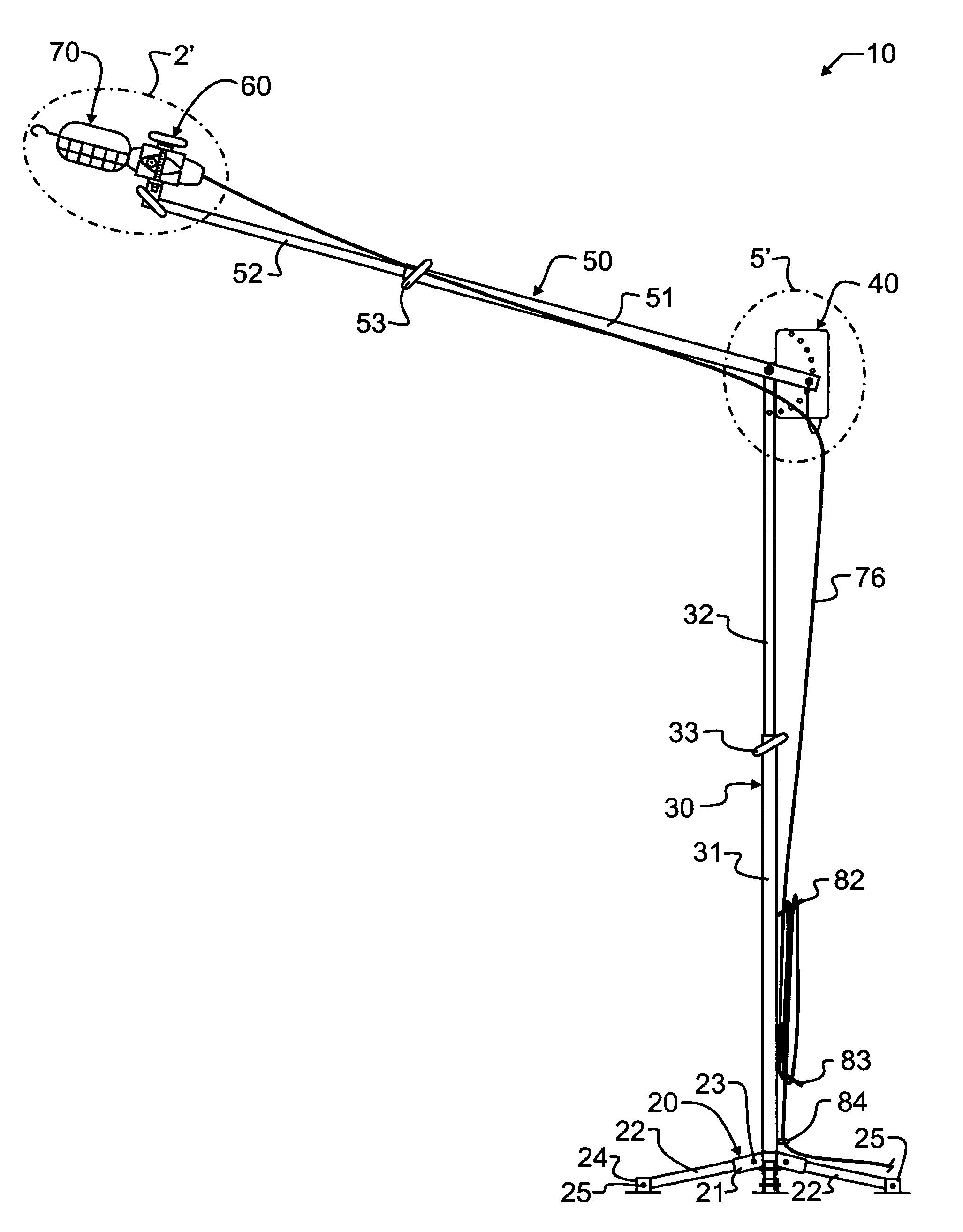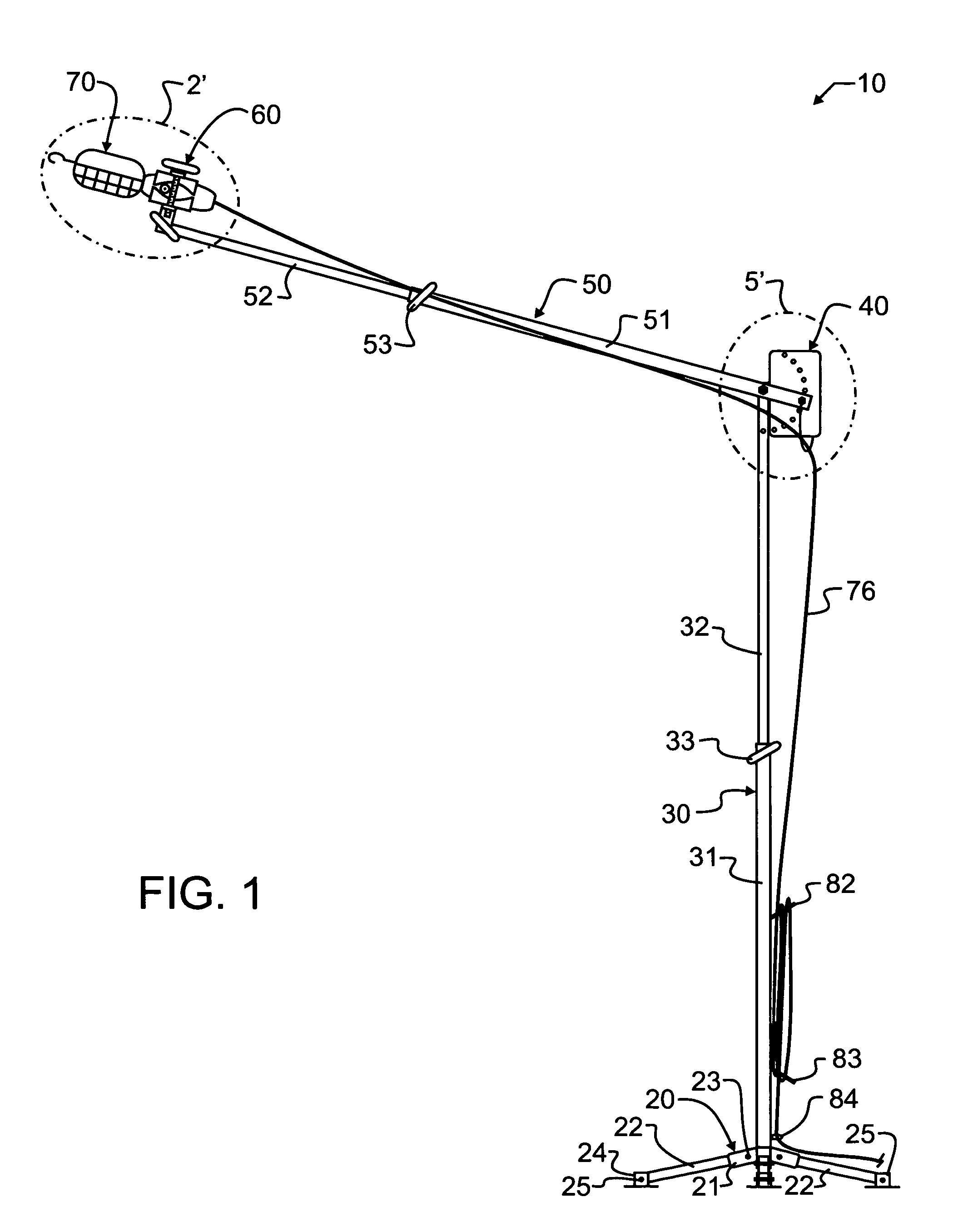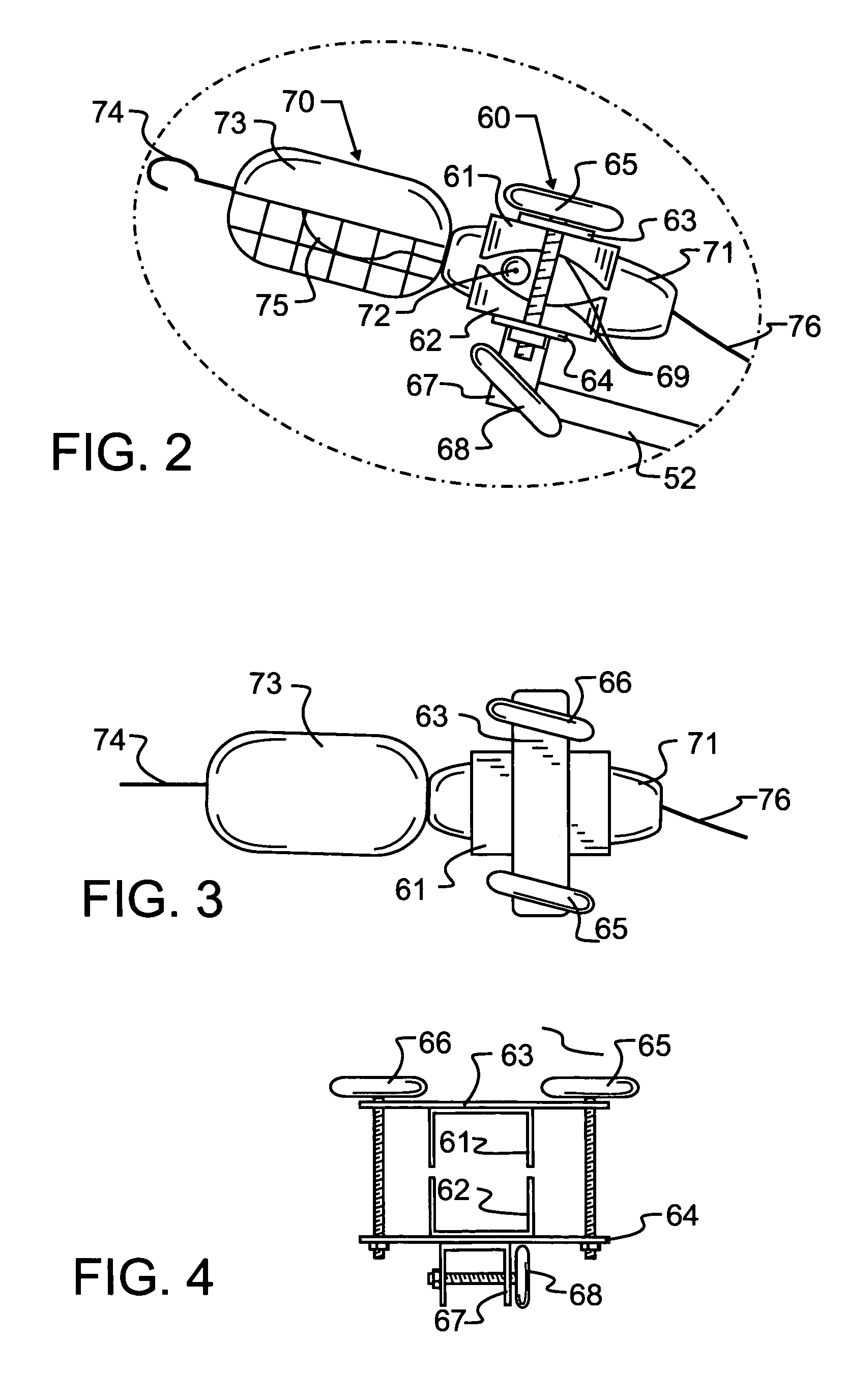Adjustable overhead trouble light stand
a light stand and adjustment technology, applied in the field of illumination, can solve the problems of inability to adjust the height of the light stand, the object not in the direct illumination path may receive inadequate light for accurate sensory information to be gained in minimal time, and the general inadequate overhead or spot lighting, etc., to achieve convenient use, minimize manufacturing cost and complexity, and simplify the setup
- Summary
- Abstract
- Description
- Claims
- Application Information
AI Technical Summary
Benefits of technology
Problems solved by technology
Method used
Image
Examples
Embodiment Construction
[0022]Manifested in the preferred embodiment stand-supported light source 10, the present invention combines collapsing, telescopic, pivotal and flexible joint couplings into a stand suitable for supporting diverse light sources. As illustrated generally in FIG. 1, preferred embodiment stand-supported light source 10 is comprised by seven major components, including collapsible base 20, telescopically extensible vertical standard 30, pivotal joint 40, telescopically extensible arm 50, clamp 60, light source 70, and electric cord supports 81–83. Ordinary components commonly used will be recognized and understood to be contemplated herein, for exemplary purposes but not limited thereto including such devices as washers of steel, polytetrafluoroethylene, polyethylene, polypropylene, nylon or the like. The use and selection of such ordinary components will be understood to be incorporated herein without specific discussion thereto.
[0023]Collapsible base 20 most preferably includes at le...
PUM
 Login to View More
Login to View More Abstract
Description
Claims
Application Information
 Login to View More
Login to View More - R&D
- Intellectual Property
- Life Sciences
- Materials
- Tech Scout
- Unparalleled Data Quality
- Higher Quality Content
- 60% Fewer Hallucinations
Browse by: Latest US Patents, China's latest patents, Technical Efficacy Thesaurus, Application Domain, Technology Topic, Popular Technical Reports.
© 2025 PatSnap. All rights reserved.Legal|Privacy policy|Modern Slavery Act Transparency Statement|Sitemap|About US| Contact US: help@patsnap.com



